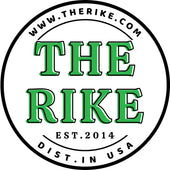Grow Your Own Healing Garden: Sustainable Herb Tips
Are you looking for a way to enhance your health and well-being naturally? A healing garden filled with sustainable herbs can be your answer! Growing your own herbs not only allows you to have fresh ingredients at your fingertips but also provides an array of medicinal properties that can help with various ailments. In this guide, we will explore how to create your own healing garden and share sustainable herb tips to ensure your garden thrives for years to come.
Table of Contents
- Benefits of Herbs for Healing
- Getting Started with Your Healing Garden
- Sustainable Gardening Tips
- Harvesting and Preserving Your Herbs
- Frequently Asked Questions
Benefits of Herbs for Healing
Herbs have been used for centuries in traditional medicine to treat various health conditions. Here are some of the primary benefits of growing your own healing herbs:
- Natural Remedies: Many herbs possess anti-inflammatory, antioxidant, and antimicrobial properties that help in healing.
- Culinary Uses: Fresh herbs enhance flavor in your cooking and promote healthy eating habits.
- Mental Well-being: Gardening itself has therapeutic benefits, reducing stress and improving mood.
- Environmental Impact: Growing your own herbs is a sustainable practice that reduces carbon footprint compared to store-bought options.
Getting Started with Your Healing Garden
Before you plant, it’s essential to understand your goals and the environment in which you’ll be gardening. Here’s how to start your healing garden effectively:
Choosing the Right Herbs
Selecting the correct herbs for your healing garden is crucial. Consider the following factors when choosing your herbs:
- Climate: Identify herbs suitable for your local weather conditions. Some prefer warm climates, while others can thrive in cooler temperatures.
- Health Needs: Choose herbs based on your specific health requirements. For instance, if you seek stress relief, consider planting lavender or chamomile.
- Growth Habits: Opt for a mix of annuals (like basil) and perennials (like rosemary) to ensure year-round availability.
Here’s a list of common healing herbs to consider:
- Mint - Great for digestion.
- Lavender - Known for its calming properties.
- Chamomile - Used to reduce anxiety and promote sleep.
- Ginger - Excellent for nausea and digestive issues.
- Echinacea - Boosts the immune system.
Planning Your Garden Space
Before planting your herbs, you need to consider the garden’s layout. Here are some tips for planning your garden space:
- Location: Find a spot that gets at least 6-8 hours of sunlight daily.
- Containers vs. Ground: Decide if you'd prefer raised beds, containers, or traditional in-ground planting. Containers are perfect for smaller spaces.
- Spacing: Ensure adequate spacing between plants to allow for growth and airflow to prevent disease.
Sustainable Gardening Tips
Creating a sustainable healing garden is essential for the long-term health of both your herbs and the environment. Here are some tips to maintain a sustainable garden:
Soil and Nutrient Management
Healthy soil is the foundation of any successful garden. Here are key practices for maintaining excellent soil health:
- Composting: Use organic materials to create compost that enriches the soil with nutrients.
- Mulching: Apply mulch to retain soil moisture and suppress weeds.
- Crop Rotation: Rotate your herbs annually to prevent soil depletion and reduce pest build-up.
Natural Pest Control Solutions
Dealing with pests can be a challenge in any garden. However, many natural solutions can help protect your healing herbs:
- Companion Planting: Plant certain herbs together to naturally repel insects. For example, marigolds can deter aphids.
- Neem Oil: Use this natural pesticide to repel various pests.
- Hand-Picking: Regularly check your plants for pests and remove them by hand to prevent outbreaks.
Harvesting and Preserving Your Herbs
Knowing how to properly harvest and preserve your herbs will maximize their benefits and prolong their usability:
- Harvesting: Pick your herbs in the morning for optimal flavor and potency. Regular harvesting encourages new growth.
- Drying: Hang herbs upside down in a cool, dark place to dry them. Once dried, store them in airtight containers away from direct sunlight.
- Freezing: Chop herbs, mix them with oil, and freeze in ice cube trays for later use in cooking.
Frequently Asked Questions
What are the best herbs for beginners?
For beginners, herbs like basil, mint, and chives are excellent choices. They are easy to grow and require minimal maintenance.
How can I make my healing garden organic?
Use organic seeds, avoid chemical fertilizers and pesticides, and practice practices like crop rotation and companion planting to maintain an organic garden.
Can I grow herbs indoors?
Yes! Many herbs can thrive indoors as long as they receive adequate sunlight. Consider using grow lights if natural light is insufficient.
How often should I water my herbs?
Watering needs vary depending on the herb and climate. Generally, it’s best to water when the top inch of soil feels dry. Always check individual herb requirements.
When is the best time to harvest herbs?
The best time to harvest herbs is typically in the morning after the dew has dried. This is when the essential oils are most potent.
Creating a healing garden filled with sustainable herbs is a rewarding journey that promotes not only your health but also the health of the planet. With the insights and tips shared in this article, you can begin your own healing journey right in your backyard or balcony.
Take the first step towards a healthier lifestyle by starting your healing garden today. For more resources, tips, and products to support your gardening journey, visit therike.com.





Leave a comment